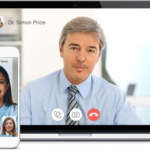Environmental and personal factors still create barriers for people with disabilities
Children, youth, adults, and seniors
Assistive products and technologies – such as wheelchairs, upper-limb prostheses, and hearing and speech devices – hold promise for partially or fully mitigating the effects of impairments and enabling people with disabilities to work, but in some cases environmental and personal factors create additional barriers to employment, says a new report from the National Academies of Sciences, Engineering, and Medicine.

Innocence, who suffers from multiple sclerosis, often encounters difficulties when using public transport. JORGE PARÍS
Medical Xpress May 10, 2017
Moreover, a mismatch sometimes exists between the products that are covered by Medicare and other insurers and those that would best meet the needs of users, the report says. New assistive devices and technologies are advancing faster than reimbursement systems and clinician education, which may limit access to these devices and training in their use.
According to Census Bureau data, 56.7 million Americans had some type of disability in 2010. Only 41 percent of working-age individuals with a disability reported being employed in the Survey of Income and Program Participation conducted that year, in contrast to 79.1 percent for working-age people without a disability. The Social Security Administration asked the National Academies to convene a committee of experts to examine selected assistive products and technologies – wheelchairs and other seated mobility devices, upper-limb prostheses, and hearing and speech assistive technologies – and assess the extent to which people have access to and use these devices, as well as the extent to which the devices support occupational success.
Data on the prevalence of use of assistive products and technologies and the extent to which they mitigate impairments are fragmented and limited, the report says, making it difficult to quantify their impact on employability. Assistive products and technologies have the potential to partially or completely mitigate the impacts of some impairments, provided the appropriate products and technologies are available, properly prescribed, and fitted; the user receives training in their use and appropriate follow-up; and societal and environmental barriers are limited.
However, access to assistive devices and to qualified providers who can properly evaluate, fit, and train people in their use is frequently limited and varies significantly among individuals by state, geographic area (urban to rural and frontier areas), and funding source, the report says. Furthermore, personal factors – for example, the person’s age and previous work experience – and social and environmental factors, such as workplace attitudes and the physical workspace, can pose barriers to employment.
An evaluation of a person’s functioning ideally would include the assistive products and technologies he or she normally uses, but professionals involved in disability determinations cannot assume that such devices necessarily enable the person to work. Environmental, societal, and personal factors also need to be taken into account.
The report also concludes that assistive products and technologies are advancing at a much faster rate than clinician education, regulations, and reimbursement systems – a difference that may limit access to these devices and training in their use. The provision of assistive devices often depends more on reimbursement policy than on patient need. In some cases, the products and technologies deemed medically necessary, and thus covered by Medicare and other insurers, are not those that would best meet the needs of users in terms of enhancing their participation in life roles. Medicare and other insurers may reject payment for products and technologies that are new or ones that they consider are not medically necessary, even if they are prescribed by a trained professional.
Limited evidence on the impact of assistive products and related rehabilitative services on people’s activity and involvement may affect decisions by Medicare and other insurers about which devices and services to cover, the report notes. Additional research is needed to understand how the specifications for and use of assistive products support inclusion in society and work participation for individuals with disabilities.
In addition, socio-economic status and education levels may affect access to coverage for assistive products and technologies and related services. Health literacy is associated with a variety of factors, including educational level. Acquisition of assistive devices may be promoted by people’s knowledge of their needs, device and coverage options, and means to pursue the device(s) they need. Moreover, the loss of access and coverage that is frequent among youth of transition age – the period from high school (ages 15 and 16) through young adulthood (ages 24 to 26) – is a significant impediment to their independent living, entry into the workforce, or further education.
Source Medical Xpress
The Promise of Assistive Technology to Enhance Activity and Work Participation, National Academies of Sciences, Engineering, and Medicine. 2017. Washington, DC: The National Academies Press. doi: https://doi.org/10.17226/24740.
Also see
Major survey identifies social barriers for disabled people: get the data in The Guardian
Disabled people ‘twice as likely’ to miss out on careers, courses and holidays in The Guardian
Parks, public buildings and metro, main barriers for the disabled in the region in 20 minutos
Disabled people ‘face additional debt difficulties’ in The Guardian
New law bans bias against people with disabilities, but shortcomings exist, say experts in The Japan Times






